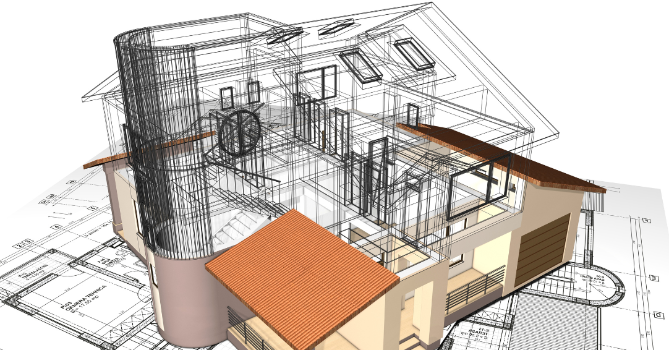
Crafting Tomorrow: The Essential Guide to BIM
Picture this: you're embarking on a journey where building isn't just about laying bricks but about creating smarter, more efficient spaces. Welcome to the world of Building Information Modeling (BIM) and digital innovation, where every detail of a construction project, from the first sketch to the final brick, is mapped out in a virtual world. These technologies aren't just fancy tools; they're revolutionizing the way architects, engineers, and construction professionals work together. By embracing BIM and digital advances, the construction industry is breaking down barriers, improving collaboration, and making projects more sustainable and cost-effective. It's about making buildings not just for today, but for the future, ensuring they're as efficient and green as can be. So, as we delve into the best practices for implementing these groundbreaking technologies, remember: we're not just constructing buildings; we're crafting the future, one digital blueprint at a time.
BIM's journey in the industry is like watching a city skyline grow, evolving from simple outlines to complex structures full of life. Not too long ago, architects and builders relied on paper drawings and their imaginations to bring buildings to life. Then came BIM, like a digital seed planted in the heart of the construction world. It sprouted into a tool that let everyone involved see a building before a single stone was laid. BIM wasn't just about seeing; it was about understanding and sharing knowledge from the ground up.
As technology advanced, BIM grew more sophisticated, turning into a collaboration powerhouse. Now, it's not just about 3D models. It's a whole ecosystem where information flows freely, mistakes are caught before they happen, and buildings come to life digitally long before they do physically. BIM has transformed how we think about building, making the process more transparent, efficient, and, importantly, more connected. This evolution isn't just changing landscapes; it's reshaping the entire construction industry's future.

BIM is like a Swiss Army knife for the construction world. Here’s why it’s a game-changer:
Everyone's on the Same Page: BIM keeps architects, engineers, and builders all singing from the same hymn sheet. With everyone accessing the same model, misunderstandings are minimized, and collaboration is maximized.
Mistakes? What Mistakes?: Imagine catching a design flaw before it becomes a costly on-site mistake. BIM makes this possible by allowing for virtual troubleshooting, saving time and money.
Green and Clean: BIM is a superhero for sustainability. It helps in choosing materials and designs that reduce waste and energy use, making buildings greener from the get-go.
On Time and On Budget: With BIM, project timelines and budgets are more than wishful thinking. The technology helps in efficient resource allocation and schedule management, ensuring projects stay on track.
Safety First: By simulating construction processes, BIM helps identify potential safety hazards, making the actual construction site safer for everyone involved.
A Lifetime of Benefits: Even after the construction dust settles, BIM keeps giving. It offers valuable data for managing and maintaining the building throughout its lifecycle, ensuring it remains a happy and healthy space for years to come.
In short, BIM isn’t just about building better; it’s about building smarter, safer, and more sustainably.
Rolling out BIM isn't just flipping a switch; it's more like planting a garden. It needs the right conditions to thrive. Here are the seeds you need to sow:
Start with a Plan: Like any journey, you need a map. Define what you want from BIM. Is it better collaboration, improved efficiency, or something else? Set clear goals.
Team Buy-In is Key: Change can be tough. Get everyone on board – from architects to builders – by showing how BIM makes their work easier and better.
Training Wheels Required: Don’t expect everyone to be a BIM expert overnight. Invest in training for your team. As they grow more confident, they'll make the most of what BIM offers.
Software Compatibility Check: Ensure your BIM software plays nicely with other tools you use. Compatibility avoids tech headaches down the line.
Pilot before You Fully Commit: Test BIM on a smaller project first. It’s like a rehearsal dinner before the big day, helping you iron out any issues.
Data Standards and Protocols: Set up rules for how data is created, stored, and shared. This keeps everyone on the same digital page.
Feedback Loop: Encourage feedback from your team. What's working? What's not? Continuous improvement is the name of the game.
Celebrate the Wins: When you hit milestones, celebrate! It keeps morale high and shows the tangible benefits of your BIM journey.
Think of BIM as less of a tool and more of a transformation in how you build. It's a step into a future where buildings are smarter, projects run smoother, and teams work together like never before.
Let’s dive into two standout case studies where BIM not only made a difference but set the bar higher for what’s achievable.
The Shanghai Tower: In the heart of China, the Shanghai Tower twists skyward, a testament to innovation. Using BIM, the team tackled the mammoth task of optimizing the tower for energy efficiency and wind resistance. The AI-driven process analyzed weather data and occupancy patterns, adjusting the building's systems in real-time to slash energy use. The twisty design, informed by AI simulations, cuts wind loads, a move that wasn’t just about aesthetics but about structural integrity. The result? A skyscraper that’s as smart as it is stunning, proving that when you bring BIM into the picture, the sky's the limit.
Project HALO: Skanska’s ambitious venture, Project HALO, shows BIM’s muscle in automating construction processes. By deploying AI-powered robots for tasks like bricklaying, HALO didn’t just speed up construction; it made it safer. These robots took on the grunt work, reducing the risk for human workers and ensuring precision that’s hard to beat. It’s a glimpse into a future where humans and machines work hand in hand to build faster, safer, and more efficiently.

These stories aren’t just about technological triumphs; they’re lessons in the power of forward-thinking. The Shanghai Tower and Project HALO show us that when we’re bold enough to integrate BIM and AI into our projects, we don’t just build buildings—we build possibilities. They teach us that with the right approach, embracing technology leads to safer, more sustainable, and awe-inspiring creations that push the boundaries of what we thought possible.
Adopting BIM isn't without its hurdles. One major challenge is resistance to change. It's like trying to steer a big ship in a new direction – it takes time and effort. Then there's the cost. Investing in BIM technology and training can be pricey, especially for smaller firms. And don't forget the learning curve; mastering BIM software isn't a walk in the park.
So, how do we navigate these obstacles? First, focus on education. Show your team the tangible benefits of BIM, like fewer errors and more efficient projects. Case studies and success stories can help paint this picture. For the cost issue, consider the long-term savings BIM can bring, from reduced rework to smoother project management. Grants or subsidies might also be available to help shoulder the initial investment.
Lastly, tackle the learning curve with comprehensive training and support. Many software providers offer tutorials and courses. Remember, the transition to BIM is more of a marathon than a sprint. It's about setting a steady pace, keeping your eyes on the prize, and remembering that the benefits far outweigh the initial hurdles.
The horizon for BIM and digital technologies in construction is wide and promising. We're looking at a future where virtual reality (VR) and augmented reality (AR) aren't just for gaming; they're essential tools for architects and builders, making designs more immersive and interactive. Artificial intelligence (AI) will play a bigger role, not just in design and planning but in predicting project challenges before they arise. Imagine drones flying over your site, mapping every inch in real time, or robots that can lay bricks with precision. As these technologies evolve, they'll make construction faster, safer, and more environmentally friendly. The future of construction with BIM and digital tech is not just about building structures; it's about crafting smarter, more connected, and sustainable environments. The potential is enormous, and we're just getting started on this digital construction journey.
BIM and digital technologies are reshaping construction into a field that's more connected, efficient, and sustainable. As we embrace these changes, we're not just building better; we're building the future. It's an exciting time to be part of this digital revolution, where every project is a step towards smarter, greener building practices. Let's keep pushing the boundaries, together.